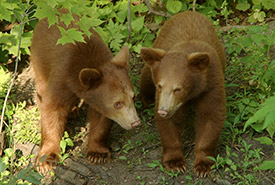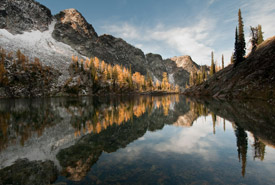Climate change adaptation

Cinnamon-coloured American black bear, Kenauk (Seigneurie Papineau) (Photo by Kenauk Nature)
Climate change is a major threat to wildlife and ecosystems in Canada and around the world. Adaptation to these changes is critical, not only to protect biodiversity but also to support human health and well-being.
In Canada, we are already observing the impacts of climate change:
- The average annual temperature in Canada has warmed by 1.6 °C.
- Increasingly intense and frequent extreme weather events that result in flooding and drought.
- Rising sea levels and storm surges.
- Increasing frequency and intensity of forest fires.
- Shifts in the distribution of animals.
Conservation: A natural solution for adapting to climate change
The conservation and restoration of natural environments play a key strategic role in climate change adaptation. Here are some examples:
Maintaining ecological services for people
Conserving land and aquatic environments protects the quantity and quality of ecological services; the useful functions that nature provides for humans. Take wetlands, for example. Wetlands act as natural buffers. As they hold and clean water, they are a formidable defence against floods and torrential rain.
Increasing the resilience of ecosystems
Healthy and interconnected natural environments support healthy populations of wildlife and allow them to shift their range in response to a changing environment. For example, wildlife corridors allow species to move or disperse to areas that meet their needs. Corridors and habitat connectivity are critical for species to adapt to climate change.
Carbon capture and storage
Natural environments — especially coniferous forests and peatlands (wetlands) — store carbon. By sequestering carbon over the long term, these habitats reduce the amount of greenhouse gases (GHG) in the atmosphere, which limits global warming.
Ongoing projects
Conservation of connectivity corridors
The Nature Conservancy of Canada (NCC) and our partners want to protect the ecological corridors — the natural pathways along which species travel — that connect Canada's natural environments locally, and across the continent. It is estimated that habitats in Quebec could shift northward an average of 45 kilometres per decade. This means that major corridors on a continental scale represent an important climate change adaptation strategy.


Darkwoods: a carbon credit pilot project

Alpine Lake on Darkwoods, BC (Photo by Bruce Kirkby)
NCC is venturing into the carbon market with the GHG emissions allowance trading system. In British Columbia, NCC has implemented the Darkwoods Carbon Project, one of the largest forest carbon credit projects in North America, to market the carbon credits generated by its 55,000-hectare (136,000-acre) Darkwoods forest property, which is around the same area as the island of Montreal.
“Canada has a rare opportunity, indeed an obligation, to be a world leader in the conservation of natural habitat and by doing so to contribute directly to the fight against climate change.”
‒ John Lounds, NCC President and CEO




